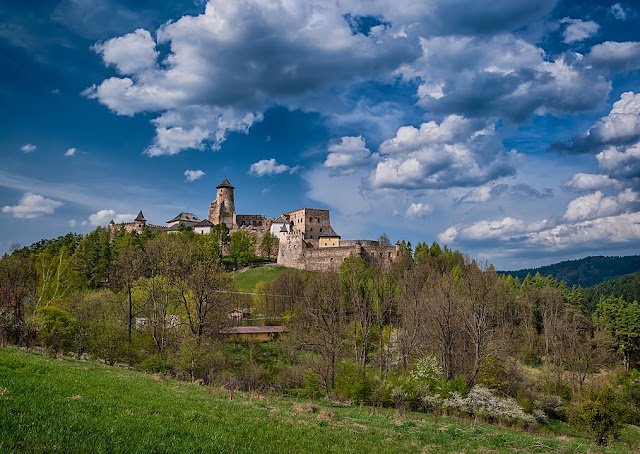Featured
GENEALOGY CHALLENGE 2021 - Photo of Ancestral Place
GENEALOGY CHALLENGE 2021
Ancestral Place - January 14th entry of a 31-day challenge to post a document, photo or artifact on social media every day in January.
by Nancy Gilbride Casey
Soaring 700 feet above the surrounding valley, on a limestone cliff in northern Slovakia, is the magnificent Stará Ľubovňa Castle.1 This very sight may have captured the imaginations and stirred the souls of my great grandparents Anna Sophia Tatar (1883-1950) and John Simonik (1873-1950).
Well, that was the way this blog post about an ancestral town photo was going to begin. Insert sound of needle scratching a phonograph record here.
Sometimes our imagining of what our ancestors may have experienced collides head on with reality.
Both Anna and John were born the village of Forbásy, a few miles from this castle. They were baptized in the Roman Catholic church at Gňazdá (now known as Hniezdne). The map below shows the distance from these towns to the castle (starred).
I wondered: Could my great grandparents see this imposing sight from their village? Were they inspired by it every day? Never having been to Slovakia to see for myself, I posed some of these questions to the good folks on the Slovak Genealogy FaceBook page.
Turns out the answer was, "Nah!"
One knowledgeable FBer noted, "Hniezdne is about 2 miles from the castle at Starã Ľubovňa, and Forbásy is about another mile away. So if you were up on a hill and no other hill was in the way, you could barely see the castle in the distance." Womp waaaa.- Forbásy was a very small village, with clustered, independent houses. It had no church, only chapels. So, residents went to nearby Gňazdá to tend to Catholic sacraments like baptisms, marriages, etc.
- The church in Gňazdá was named Kostol sv. Bartolomeja or Church of St. Bartholomew.
- The residents of Forbásy at the time my great grandparents lived there may have actually been Goral, a mini-ethnic group combining Polish and Slovak characteristics; I'm tasking myself with learning more about this group in the future.
1 "Ľubovňa Castle," by Kateryna Baiduzha (https://commons.wikimedia.org/w/index.php : accessed 13 January 2021), licensed under Creative Commons License - CC BY-SA 4.0.


Comments
Post a Comment